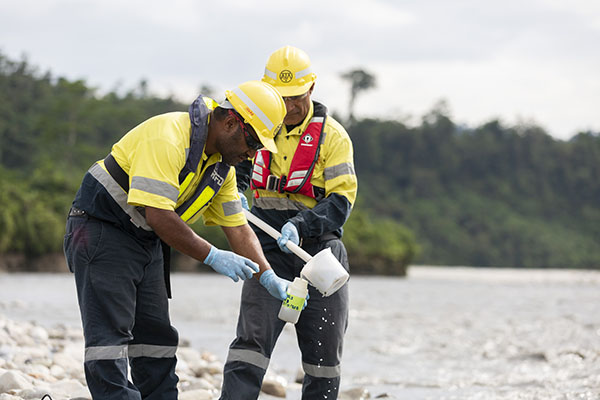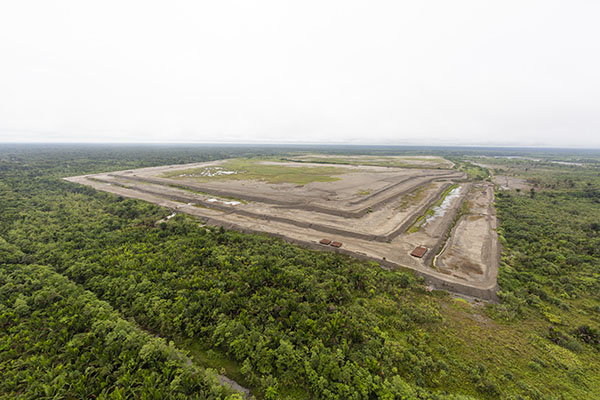Acid Rock Draining Mitigation
Ok Tedi Mine is the only large copper mine in the world to separate sulphides from the tailings before tailings discharge.The risk of acid rock drainage identified before 2008 due to high sulphur levels and insufficient neutralising capacity in the sediments is now managed with the implementation of the Mine Waste Tailings Project (MWTP).
Since 2008, pyrite and other sulphide minerals are removed from tailings and acid-neutralising limestone added to the mill feed at the primary crusher. The finely ground limestone reacts more readily to neutralise acidity and is transported with the tailings down the river system. In addition, limestone is added to the waste rock dumps to provide further neutralising capacity.

Sulphide Separation
OTML is the only large copper mine in the world to separate sulphides from the tailings before tailings discharge. The residue material following metal product removal is re-treated in the separate Tailings Pyrite Plant (TPP) floatation plant to extract pyrite (iron disulphide) before disposal.
The pyrite slurry is piped to storage pits on the West Bank of the Ok Tedi River at Bige where it is permanently stored in engineered structures under water with a non-acid forming sediment cover system to prevent the oxidation of the sulphides and formation of acid. Once full, the pits are capped with Non-Acid Forming (NAF) sands dredged from the river as part of the normal sand removal process.

Tailings Disposal
After sulphide recovery from the tailings, the remaining barren sands are disposed of by pumping the material from the processing plant through a pipeline located within the Moscow Tunnel (about 1.5 km long) for discharge into tributaries of the Ok Tedi River and eventually into the Fly River.
The tailings are mobilised by the fast-flowing streams and held in suspension until the river profile starts to flatten out at Bige, upstream of the junction with the Fly River.
As the stream velocity slows over a dredged slot in the riverbed, most of the tailings, particularly the coarser particles settle out into the slot. A dredge then pumps the sediments ashore for hydraulic placement into long-term engineered storage stockpiles located on the East and West Banks of the Ok Tedi River at Bige.
The reduction in the quantity of pyrite materials flowing down the river has markedly reduced the acid rock drainage risk throughout the river system.
Waste Rock Management
Waste rock is characterised according to its Acid Rock Drainage (ARD) potential and disposed of in the Taranaki, Harvey Creek, Paris, Moscow or Vancouver waste dumps. All dumps are monitored by the OTML Geotechnical Department.

